Microsoft BUILD: Windows 8, A Pre-Beta Preview
by Brian Klug & Ryan Smith on September 13, 2011 12:05 PM EST- Posted in
- BUILD
- Windows
- Microsoft
- Windows 8
- Trade Shows
The Metro UI Continued
Next up is the control panel, which doesn’t entirely supplant Windows’ traditional control panel, but instead offers high level features in a Metro-friendly interface. The left side scrolls up and down and exposes categories, the right side serves as the interaction area for playing with all the toggles.
Interesting settings inside the control panel are things like privacy toggles for location services, which is akin to what we’ve seen on virtually every mobile platform, notifications through the push notification service which no doubt bears similarity to WP7, toggles for the onscreen keyboard (more on that later), and more. Under General are two new features - Refresh your PC, and Reset your PC.
The second is reasonably self explanatory, it resets the entire OS to its original shipping state using a built-in recovery partition part of the install. The first is a bit more interesting, as it restores Windows and configuration settings while leaving user-specific files like photos, music, and videos intact. Microsoft has noted that this option leverages the management tools used for imaging PCs in an enterprise environment, but now in a desktop setting.
There’s also a category marked ‘devices’ which is the settings pane for controlling peripherals like printers, human interface devices, and TVs. It doesn’t replace the device manager, but acts in practice as a high-level one for the devices that are used by the Metro/Start interface. At the very bottom is ‘more settings’ which literally takes you back to the old Windows 7 control panel.
This is the start menu, so just like in Windows 7 and Vista, you can simply start typing to get an immediate list of files and applications that match the string. Results are categorized into one of three bins - apps, settings, and files. Of course you can also just type the application name and hit enter like previous editions of Windows.
That really brings me to where the real windows desktop “lives” in Windows 8 right now, and there are a couple ways to invoke it. The first is that when a traditional desktop application is launched, either through a tile or search result, the Metro UI disappears and gives way to a Windows 7-esque desktop environment. The second is either by using the Windows Explorer or Desktop tiles, and the third is by good-ol Windows+D. Any of these get you to the desktop so to speak, which at this point looks almost exactly like Windows 7. There’s a good chance this isn’t finished yet and is going to change soon, but for now things look very familiar.
Down in the bottom left is the Start button, which gets a new look, and tapping or clicking here brings you back into the Metro start screen. It was at this point that things really occurred to me - the new start screen completely replaces the Windows 7 start menu in its entirety.
I’m reminded after seeing a lot of Windows 8 of two things. It’s almost like Windows Origami experience for UMPCs, but crossed with Windows Phone 7’s Metro design language and fluidity, all while retaining the desktop layer underneath. The question is whether Windows can successfully tailor itself to so many different form factors and retain the desktop power that users need and expect.
The last new UI elements we’ve been shown belong to the desktop part of the OS. These two features are the freshly included explorer ribbon and new queued copy dialogs.
The new Windows 8 explorer window includes two modes. In collapsed mode, the window is essentially the Windows 7 explorer pane, with the inclusion of an up a directory button and simplified bottom pane.
With the window expanded however, the ribbon appears. It’s starting to make sense that the ribbon really accommodates a touch-centric workflow, where right click is cumbersome or impossible. In its stead, controls in the ribbon are the one stop shop for file management.
There are also some contextual elements that pop up as well, for example when dealing with a .zip, compressed folder tools appears, and when photos are selected, picture management tools appear. For now the Ribbon isn’t mandatory, and the ability to collapse it up and retain valuable horizontal space should assuage the concerns of hopefully at least some of its critics.

The next major explorer change is the new and improved file copy dialog, which gives an optional detailed graph of copy throughput, and the ability to pause, resume, or stop file copy actions. We've only just started using this build and need more time to really play with larger file copies, but thus far the functionality does work and is welcome.


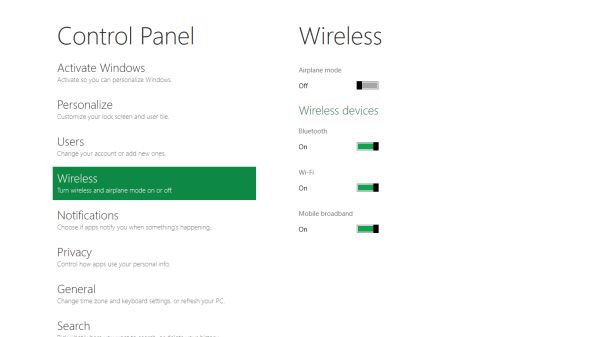
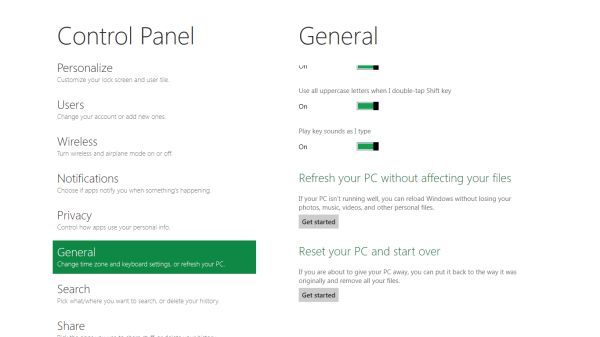
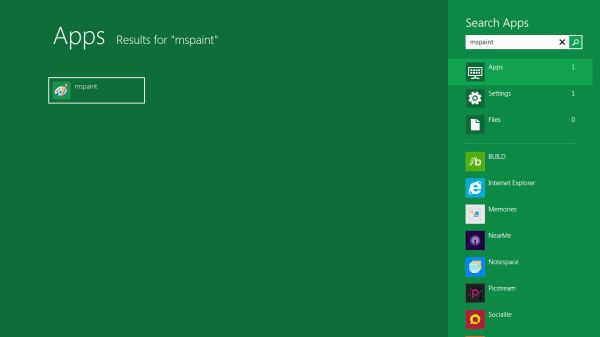
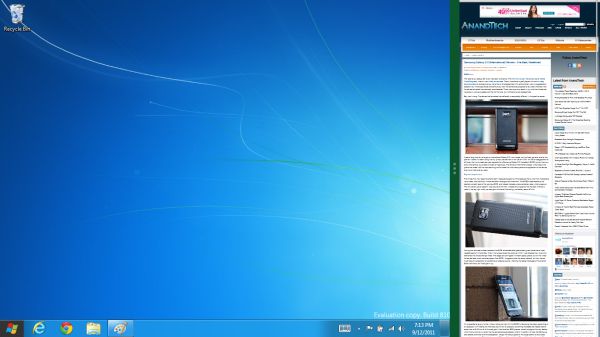
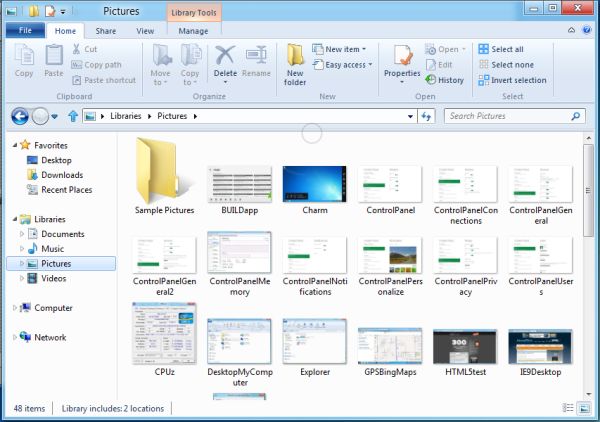
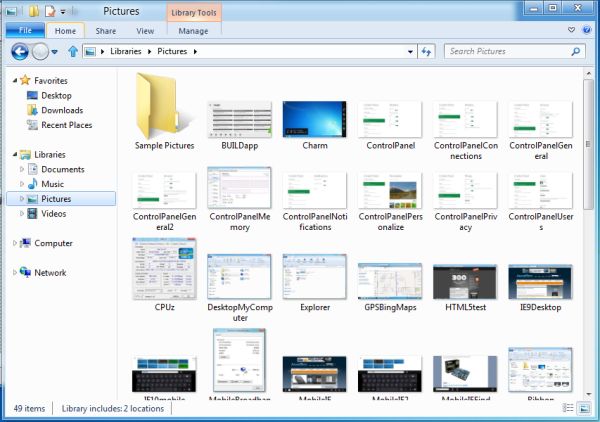









235 Comments
View All Comments
yankeeDDL - Wednesday, September 14, 2011 - link
I perfectly agree.Like with the security features of Vista, and with the Ribbon in Office, MS choose their way and are moving forward, thinking that they know what's best for you, despite having been proved wrong times and times again.
From their dominant position, they can still afford it.
Now they're pushing for the Metro UI, something interesting, but hardly revolutioning, like IOS and Android have been, an UI that will disappear from Samsung in 2012, because of its abysmal adoption.
PCs is the last stronghold of Windows: it disappeared from TVs, cars, mobiles: maybe it's about time they follow suit.
mlambert890 - Thursday, September 15, 2011 - link
Your own arguments prove you are completely wrong except possibly in your own mind.The security features of Vista evolved into the security features of W7 and are the same security features in OSX and Linux. On an extreme niche of curmudgeons that fancy themselves "super power users" bitch about dual privelege levels and access control gates within the OS.
Same with the ribbon. I was on the front lines of the most prepostrous bitching and moaning and DOOM calling over the ribbon. Today it is universally regarded as a good change or at the very least a neutral one.
One thing for sure thoug is that even folks who self describe as "technophiles" and truly believe they are cutting edge will act like 90 year olds whose drug store has moved as soon as *anything* changes. Sad really.
robinthakur - Wednesday, September 14, 2011 - link
I agree, but that isn't when you would be using Metro is it? It's for touch devices, although I don't understand how they are going to get it to work with legacy apps in the slightest. You need special versions of Excel, Word etc, build from the ground up for touch as Apple has done with Pages, Numbers, iMovie et al or it's just going to be a flashy acelerated interface which lacks full functionality and this guarantees that end users will hate it.This seems similar to how on an HTPC, to play a Blu-ray, you need to launch a 3rd party player which has a different look and feel and you need to break out the keyboard to control it. Awful, and so counter intuitive to users.
On the other hand, the fact that MS is involving developers at this stage, hopefully means that it's own first party products like Office/SharePoint etc. will work properly with it. They are doing alot right with Win 8, but seems like they are constantly playing catchup to Apple these days.
realmike15 - Sunday, September 18, 2011 - link
I think you're over simplifying the issue. Computing for toddlers? Last I checked toddlers aren't checking their stocks, the weather, rss feeds, and news. The simplified UI design is a good starting point, it makes navigating the computer interface easier those who find previous Windows releases daunting. Most old school techies aren't going to embrace this, but that's not because of poor design... it's because they're stuck in their ways. The old desktop system is clunky and archaic for everyday browsing. By no means is this a replacement for gaming, or other industries that require the tried and true keyboard/mouse setup. But that's why there's still a standard desktop.This IS a step in the right direction though, I have any delusions about this implementation being perfect. It will probably take many more versions of Windows to get this transition right, but it's a starting point. A starting point that your mother, grandmother, and all your non-tech savy friends will appreciate.
Belard - Tuesday, September 13, 2011 - link
Wait till it comes out on beta...Its still rough. I'll admit, I don't think of METRO much for a desktop and mouse... Why would I want to scroll through pages to get to some APPS when I can click on it from my task bar? But there is most likely something like that anyways. So think of Metro's arrangement switched around a bit to the side - which makes better use of todays STUPID 16:9 screens.
Look at Mac and Amiga - their "MENU" is at the top - MS has been at the bottom since Win95. Now its being shoved to the side
I bet MS has been studying user behavior quite a bit. And much of my work space is on the left side of the screen... tools on the right.
This is also perhaps the ONLY way MS has a chance to take on Apple's iOS and that MAKES perfect sense. It can improve future versions of MS-OS...
Windows7 tablets suck. WP7 is not made for tablets and is struggling to get market share. An MS-Tablet today will most likely go down in flames like WebOS, RIM and whatever... Android is not doing well against iPads.
But... MS commands about 90% of the world market in PCs. (about 75% in the USA in new sales). So... imagine the new Win8 desktops that come out, people have to get, there won't be Vista or Win7 to fall back on... ALL Metro apps are going to work on ARM based CPUs. (intel cannot be thrilled on this) This means those apps are going to be smaller than normal Win32 bloatware.
Now out comes the Win8 tablets and phones... in both types.
Win8 = tablet... high end, can run desktop software... faster CPUs $$$
Win8Mobile = Phones and tablets, they won't run legacy software (current game we see on desktops, Office 2010, etc) - but they'll RUN any Metro application and game.
Microsoft ends up creating the eco-system that can go against Apple... this is something RIM or Android cannot DO. They don't own the desktop business.
This is a brilliant move from MS, mark my words.
In the end 2012, I bet iPads will still own at least 70% of the tablet business.
By 2014, MS could flip it having 50~60% of the sales.
The iPad will always be called iPads... and MS-Tablets will always be called, Tablet like Android and Blackberry. They will always be the SODA to Apple's Coke. What matters for the next year or so before Win8 launch is how much more Apple can sell iPads. They'll be launching a new iPad 4 just after Win8 hits the market. If Apple can sell 50+ million units a year - they'll do well against Win8 up to a point.
Hopefully, MS will only have 3 versions PERIOD of Win8, all 64bit.
Win8 starter/ARM
Win8 Home
Win8 Pro (with Ultimate features built in)
If it goes well... then by the time Win10 comes out (7 years from now), the Win32 API an gone as well as any legacy 16bit, 32bit code...
We'll check in then... :)
Gimfred - Tuesday, September 13, 2011 - link
The problem with (not that it shouldn't be looked at) looking at user behaviour is it is studying how users work around the current limitations of a UI rather than the task that is intended to be achieved. Unfortunately Microsoft seems to have this idea that using a computer is the task.For tablets, they should implement and refine OneNote. That is awesome software.
robinthakur - Wednesday, September 14, 2011 - link
No, you're looking at it wrong. MS is currently in a dominant position worldwide with Windows, especially in business, but things are changing. Apple phones are being issued in many companies an many executives, because they use iPad's and Macbook Airs are introducing them into business, and saying "Just make it work" I have seen this innumerable times in the past 3 years. For my last firm, an investment bank, the whole website had to be scrapped and redesigned close to launch because a senior exec noticed that it didn't render properly on her iPad.At the same time, the desktop business is under pressure like never before. Companies are scaling back the amount of power and flexibility that they are giving to individual employees. We use thin clients extensively running MS Terminal Serverfor virtually all employees. Those that want them are issued with company iPads instead and seem very happy with them, running a propriatery app which we designed here and the standard iPad functionality.
All we used to hear were constant complaints about Windows from staff, and just because us, as techies, can divine how to use it doesn't mean that regular people will. They seem to prefer the iPads because they instinctively know how to use it. Training needs have gone from all encompassing to pretty non-existant apart from SharePoint (which I love) so cutting down functionality is actually not a bad idea if it's functionality which people rarely use.
About the only reason to own a powerful desktop these days is if you are a power user/developer, you are a techie and like to play/brag or you play games (the latter being a nearly non-existant demographic these days) with the rest buying laptops/iPads, and I can only see that becoming more pronounced in the future.
piiman - Wednesday, September 14, 2011 - link
The fact that you think the the iPad is taking over business is simply laughable.If some exec is forcing it on a company because they personally use it then it should be grounds for firing them.
mlambert890 - Thursday, September 15, 2011 - link
Whats laughable is that you dont realize he is correct yet feel so confident making absolute statements like this.Your personal bias and/or emotions dont change the fact that what he is saying is absolutely correct.
I dont care one way or the other what the client solution of choice is for my customers, but I can tell you now the shift is *massive* towards iPads in particular, to a lesser extent phones, and even Android tablets.
nitenichiryu1 - Tuesday, September 13, 2011 - link
At 8:18, he says that Windows 8 will be both METRO and TRADITIONAL desktop. Yay =D